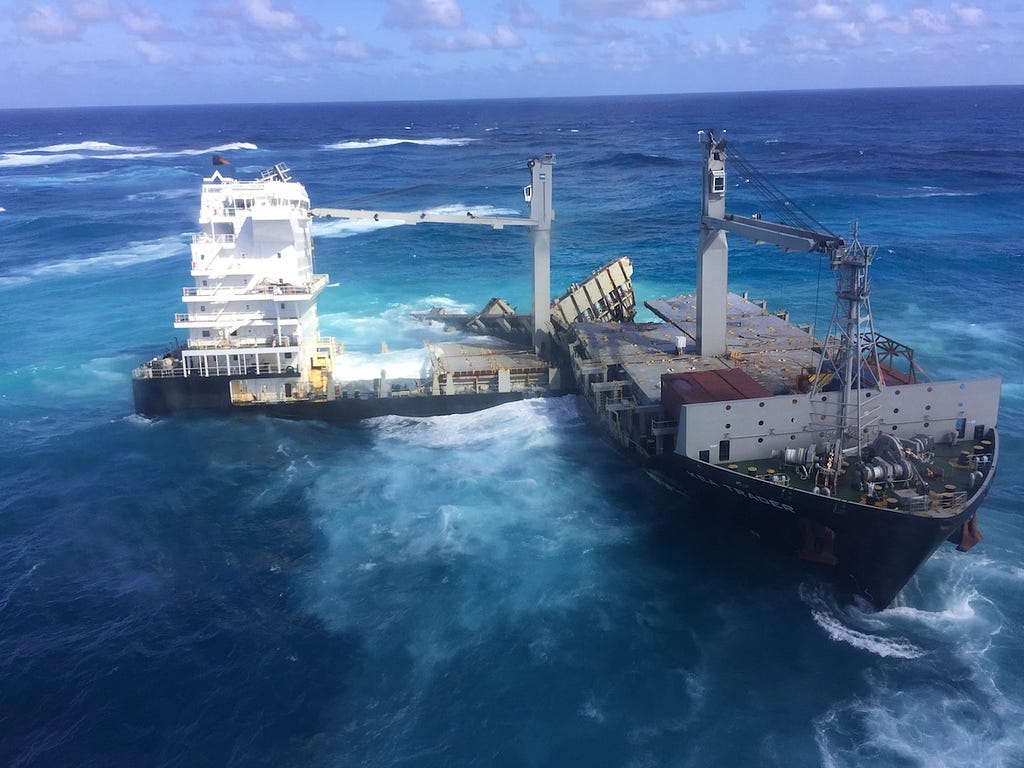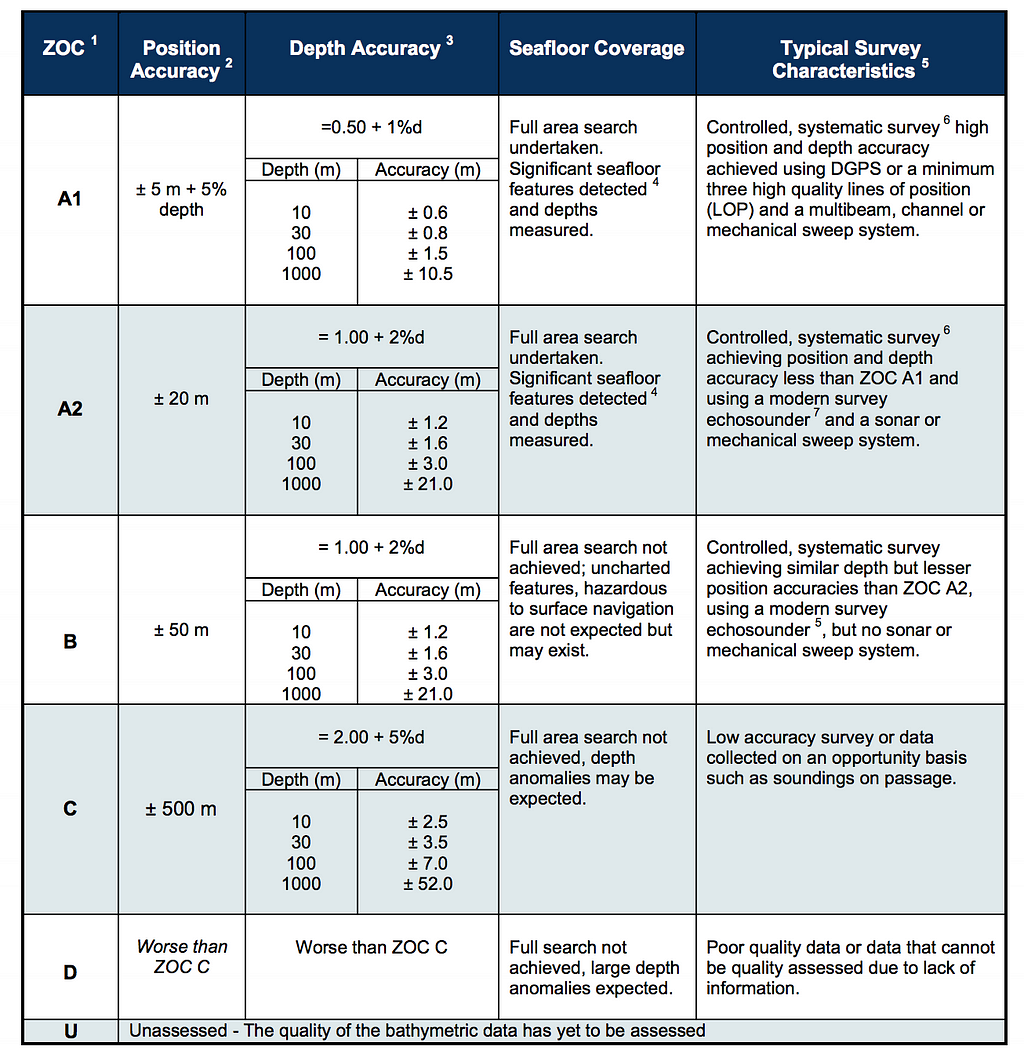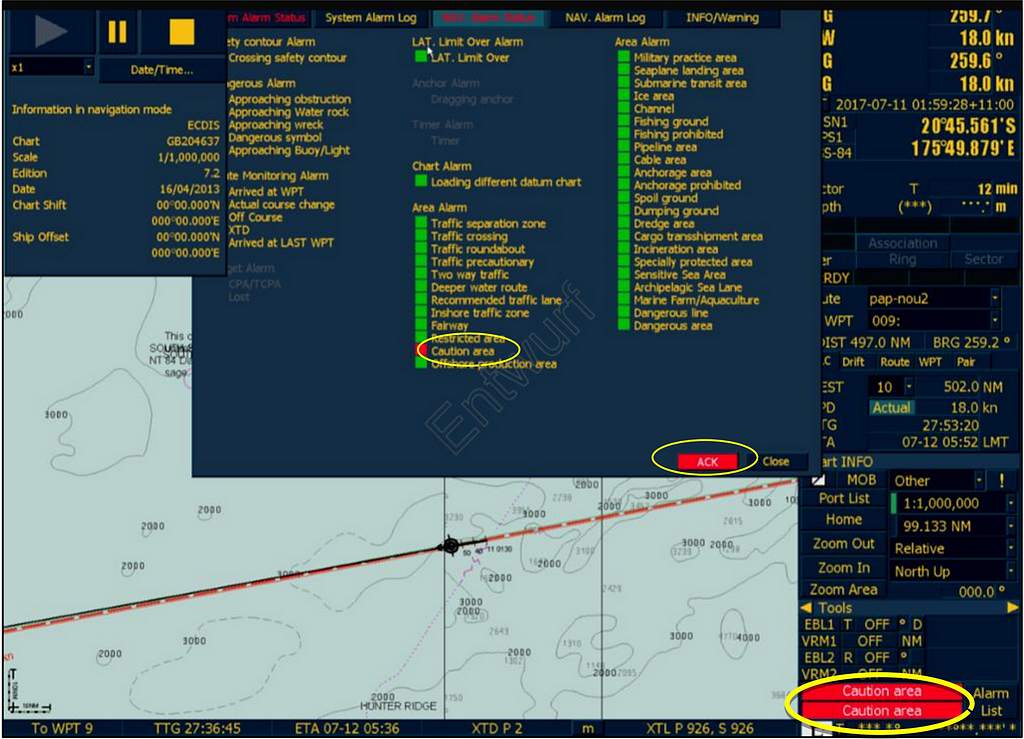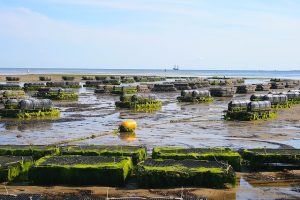The unfortunate tale of a missed reef
This series highlights recent maritime accidents, detail their causes and highlight how intelligent systems could help prevent future incidents.
It is inspired by the fact that when I co-founded Shone, I learnt that most accidents happen due to human errors. Actually, studies show that a staggering 96% of accidents are caused by human error.
Let’s take a look at an accident that happened in 2017 near Nouméa, New Caledonia.

What happened
At 00:55 (UTC +11) on July 12th 2017, the Maltese registered 2,194 TEU container ship Kea Trader ran aground and stranded over Récif Durand (Durand Reef) in the Pacific Ocean. At the time, the vessel was on a passage from Papeete, Tahiti, to Nouméa, New Caledonia.
Récif Durand is a submerged reef located approximately 120 nautical miles east of Nouméa, New Caledonia.

A salvage team was quickly dispatched to the location and arrived the day after the grounding to prepare for offloading of cargo and transfer of fuel from the ship’s tanks.
The ship experienced multiple episodes of rough sea which led to the fracture of the ship on November 12 and later to the ship breaking in two on December 4. By this time, 674 of the 782 containers the ship was transporting had been evacuated by air and roughly 600m3 of fuel oil had been drained from the tanks. Some minor oil spills were reported after the ship broke in two.
Since then, the ship has experienced back-to-back cyclones and all-around bad weather that has prevented salvors from boarding the vessel more than half the time. This summer though the shipowner (Lomar Shipping) reported progress on the salvage.
What led to this major incident
First of all, it is worth noting that the Kea Trader was using electronic chart display and information system (ECDIS) as the primary means of navigation and there were no paper charts on board.
During the voyage, the master received an update from the agent suggesting to modify the rendez-vous with the pilot. The master therefore instructed the second mate to make the required adjustments to the passage plan. During his work on the passage plan, the second mate noted a isolated danger symbol and zoomed in on his ECDIS only to realize that his planned track was passing about 0.6 nautical miles South of the isolated danger symbol and therefore did not amend his route. He did not note any warning on the passage plan left for the master to review, who assumed it was an open waters modification of the route and accepted it without carrying a second independent review.
Poor quality charts, …
The revised route resulted in the track virtually passing over the isolated danger. This happened because the isolated danger symbol appeared outside of the planned route’s starboard cross-track limit when the second mate zoomed in on the ECDIS. So why was that the case?
The Electronic Navigation Chart indicated a Zone of Confidence (ZOC) of level D (see chart below) which means that position accuracy of objects on the chart was very poor. When the second mate zoomed in to check whether the location of the reef was dangerous given his planned route, he “over-scaled” the ECDIS, which means that the scale was too high given the quality of the underlying data, and therefore the positions of different elements plotted on the ECDIS were not trustworthy. This led him to believe that the route planned was safe while it actually was not.

… human deficiencies …
But while the chart data was not of great quality, an over-scale indication and vertical lines on the ECDIS indicating positional discrepancy of charted objects was missed by the OOW. This means that the OOW earnestly believed that the vessel’s position displayed within the route limits was safe and required no action other than of adjusting the heading to follow the track.
On top of that, 23 hours before grounding, an alarm indicating “caution area” on the ECDIS also warned the crew that the quality of the chart was poor and to be cautious while navigating this area.
Finally, no warnings or reference to the isolated danger was documented in the passage plan, and no independent route check was carried out by the master or the other OOWs. The ECDIS route check function had not been enabled either.
… and a lacking user interface.
The investigation report of this incident actually highlights multiple sever flaws in the user interface:
The fact that the isolated danger symbol on the chart and the caution area message in the alarm panel remained displayed during successive navigational watches, may have suggested that there was no immediate and / or perceivable effects on the vessel or the voyage per se;
The audible alarm was set to zero and remained switched off during the vessel’s passage to Noumea. Indeed, the audible alarm, which was reportedly a distraction in coastal / pilotage waters
On top of this, although the audible alarm was turned off, the safety alarm was not even triggered to alert the crew, which probably means that the ECDIS’ algorithm for detecting grounding risk did not work.
Now this story is a tale of human error and poor design of a technology. What is interesting is that at Shone we see very often that ECDIS manufacturers just don’t take into account the end user. This leads to interfaces that are less than intuitive and honestly feel very old. To give an example here is an example of the ECDIS screen from the model that was onboard the Kea Trader.

Is this the best we can do? At Shone we choose to believe that an alternative is possible and are hard at work building it!
Learn more about us or contact me for feedback or questions!
Maritime accidents: The grounding of Kea Trader was originally published in Shone Blog on Medium, where people are continuing the conversation by highlighting and responding to this story.
